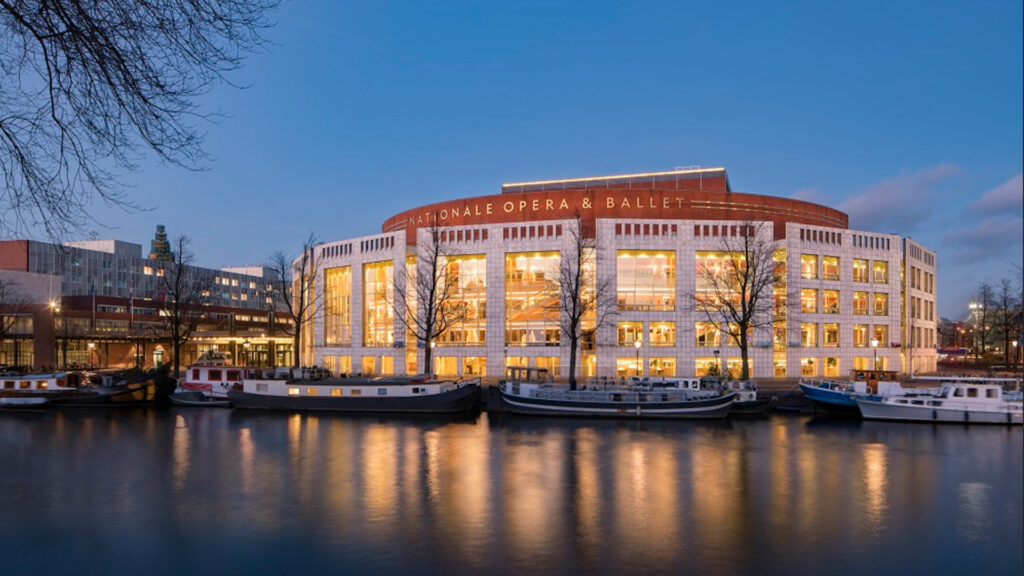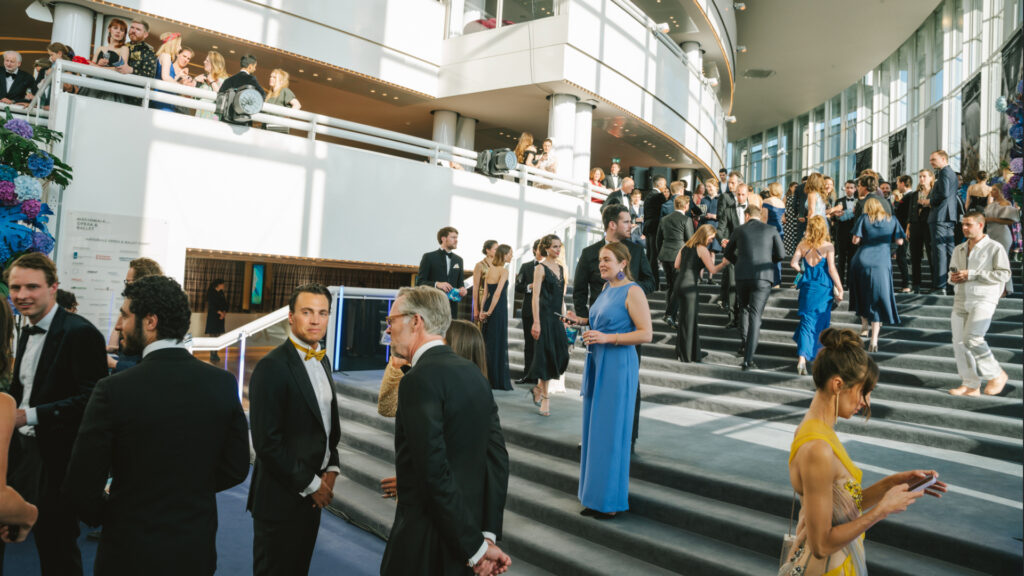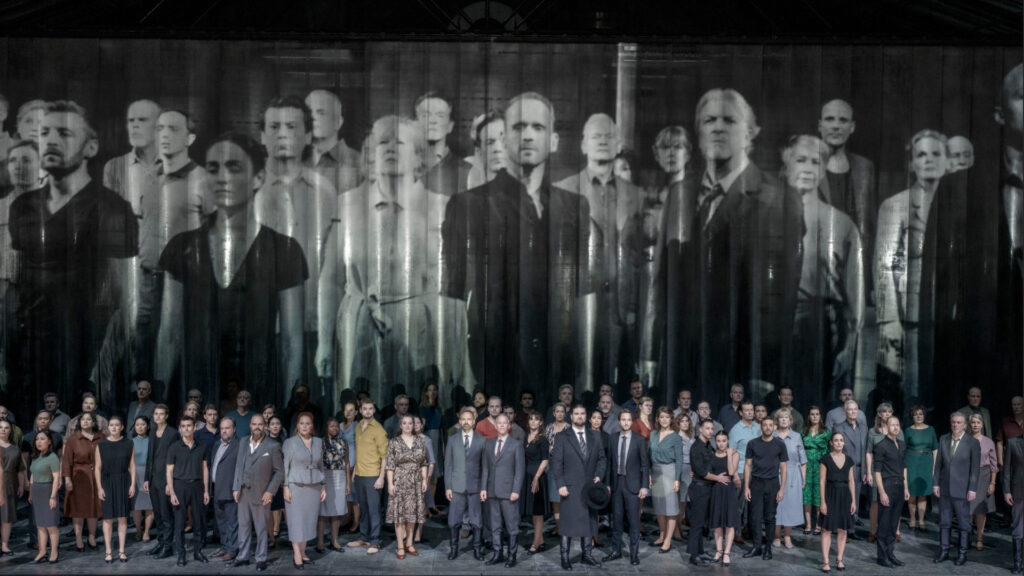When Mattijn Hallen noticed a disconnect between ticket buyers and actual audience members at Amsterdam’s Nationale Opera & Ballet, he sparked a digital innovation. His solution not only preserved the venue’s cultural heritage but transformed how arts venues understand their audiences.
Opera houses are living sanctuaries of tradition, where the echoes of arias and pirouettes intertwine with decades of cultural heritage. Here, season subscriptions aren’t just tickets—they’re heirlooms, passed from one generation to the next like treasured family secrets, steeped in fascinating traditions. Yet Nationale Opera & Ballet (NO&B) is proving that preserving cultural heritage doesn’t mean resisting innovation.
Jocelyn Kotvis, Content Marketer at CultureSuite spoke with Mattijn Hallen, who has spent 19 years at the heart of NO&B’s ticketing evolution, to uncover how they’re redefining innovation within an institution deeply rooted in tradition—and how their groundbreaking approaches are setting a precedent for the entire cultural sector.
From travelling circus to historic opera
Mattijn’s path to NO&B started far from Amsterdam, winding through cities across Europe. From Munich to Madrid, he managed ticket sales for Cirque du Soleil from a mobile box office with the travelling circus. “I can pack a suitcase in my sleep,” he reminisces with a laugh.

When NO&B—then still the Muziektheater—offered him a chance to settle in Amsterdam, it marked the beginning of a new chapter. This opportunity evolved into a mission to transform ticketing at one of Europe’s leading cultural houses, where opera and ballet have shared a home along the Amstel River since 1986.
This mission came with challenges. For example, when he just started, he encountered a striking contrast: while opera performances consistently sold out, ballet struggled to fill seats. The marketing team sometimes resorted to discounting tickets—a strategy that didn’t sit well with the venue’s artistic vision.
“The key was to change the perception of ballet from something niche to something aspirational,” Mattijn explains. Through bold marketing campaigns and a focus on highlighting its artistic value, he helped the ballet programme find its footing. “Art deserves to be paid for,” he asserts with conviction. “And once we started treating ballet with the same reverence as opera, audiences responded.”
A subscription to culture
“Selling tickets at NO&B isn’t just about filling seats,” Mattijn explains. The venue itself—affectionately nicknamed ‘Stopera’ by Amsterdammers for its dual role housing both the opera house and city hall—creates an atmosphere that transcends mere entertainment.
I can still vividly recall my first visits: the commanding marble white facade, the luxurious red carpet, the sweeping foyer, and the sophisticated bar overlooking the Amstel River. Each element contributes to an experience that feels opulent.

“That sense of elegance, combined with avant-garde artistry, has always been a part of this place,” Mattijn reflects, nodding at my memories. For generations of Amsterdammers, a night at the opera or ballet has been a carefully orchestrated affair—a place to see and be seen, where the audience becomes part of the performance itself.
This cultural significance is reflected in NO&B’s unique ticketing approach. Unlike typical venues that focus on individual sales, opera and ballet have traditionally operated through season-long subscriptions. “It’s a different rhythm entirely,” Mattijn explains. “Patrons select multiple performances for the season, essentially committing to a year-long journey with us.”
This subscription model created its own hierarchy and traditions. Long-time subscribers held privileged seating positions, and in some cases, these coveted subscriptions could even be passed down to family members.
“There’s a sense of belonging among our patrons that you don’t often find elsewhere,” Mattijn notes. “When someone subscribes to a season, they’re not just purchasing access to performances—they’re joining a cultural legacy that spans generations.”
Reaching ghost audiences with ticket sharing
Yet, the way we buy tickets has undergone a dramatic transformation over the years. What was once an elaborate ritual of selecting performances for an entire season has become a streamlined, digital transaction.
While this modernisation has made ticketing more efficient, Mattijn noticed that something vital was lost in the process—the deep understanding of who actually sits in the venue.
“In the past, we knew our subscribers intimately,” Mattijn reflects. “Each ticket represented a relationship, a connection to our patrons. Now, with modern ticketing systems, we’ve gained convenience but lost visibility.” This observation led him to identify what industry experts now call the ‘ghost audience’ phenomenon—a challenge that haunts venues across the cultural sector.
The problem seems small but leaves a lasting negative impact: traditional ticketing systems only capture information about the person buying the ticket, creating a blind spot around everyone else attending the performance.
“Imagine you’re looking at a full house,” Mattijn explains. “In a group of four friends, we only know who bought the tickets—which is just one part of our actual audience. The other people might as well be ghosts as far as our data is concerned.”
This data darkness has far-reaching implications. “Let’s say the ticket buyer is an opera enthusiast who regularly attends our classical productions. But what if their companions actually prefer contemporary dance or experimental theatre? Although artistic vision drives our programming choices, understanding our audience demographics helps us better align with their preferences.”

The impact of this data gap extends far beyond just knowing names. It affects every aspect of how cultural institutions operate—from marketing strategies and programme planning to audience development and community engagement. Small venues might miss opportunities to grow their audience base, while larger institutions risk misallocating resources based on incomplete audience insights.
“When you think about it,” Mattijn adds, “we’re making million-euro decisions about programming. Our high occupancy rate last year shows our programming and marketing strategies are working well,” says Mattijn. “Yet, we will be more successful when we fully understand who is occupying the seats.”
Community-driven innovation
The challenge of the ‘ghost audience’ required a fresh approach—one that would honour the cultural sector’s collaborative spirit while embracing modern technology. This is where CultureSuite’s ability to empower its community of venues proved invaluable. What began as a series of conversations with NO&B would evolve into a year-long collaborative effort that would not only benefit them, but also everyone else using the platform.
“We started with planning sessions,” Mattijn recalls. “The CultureSuite team would come to our offices, where we brainstormed on the audience journey, identify pain points, and imagine solutions. I like how our understanding of audience behaviour came together with CultureSuite’s technical expertise,” Mattijn says. “We exchanged ideas, combined our expertise, and created something genuinely new.”
What emerged is a feature we now call Ticket Sharing. The solution is elegantly simple in practice. Ticket holders click the share button next to their e-tickets to invite companions with a few clicks. The invitee receives an email to accept the ticket, can log in or create an account effortlessly, and once accepted, the ticket appears on their phone.
“Picture yourself at the entrance while your friend is delayed in traffic,” Mattijn explains. “With Ticket Sharing, you can transfer the ticket in seconds—quickly and effortlessly.” But the benefits extend far beyond convenience. Every shared ticket creates a direct connection between venues and their actual audience members, gradually illuminating who’s really filling the seats.
What makes both Mattijn’s and NO&B’s investment in innovation so powerful is its reach beyond their own walls. Through CultureSuite’s community model, when one venue suggests an upgrade to Peppered, every other Peppered-powered organisation benefits.
It’s a true democratisation of technology: whether you’re a small regional theatre or a major cultural institution, every venue connected to CultureSuite gains access to the same sophisticated tools. This creates a virtuous cycle where collective knowledge grows with each adoption, strengthening the entire cultural ecosystem.
While we talk about how this innovation spreads throughout the cultural sector, its impact is most visible within Mattijn’s team. “The detailed data we’re gathering opens endless possibilities,” he explains.
When asked what advice he would give to other venues contemplating similar transformations, Mattijn doesn’t hesitate. “If you have a good idea, act on it,” he urges. “It’s easy to stick with what’s familiar, especially if tickets are selling, but pushing yourself to try new approaches is far more rewarding. Don’t shy away from investing—in time, budget, and collaboration. Change doesn’t happen overnight. But it’s worth it if you want to stay relevant for the future.”
About CultureSuite
CultureSuite supports over 90 theatres, concert halls, and cultural organisations globally. Its all-in-one digital platform Peppered CMS combines a powerful CMS, versatile digital signage solutions, and a mailing tool into a centralised hub that revolutionises how live event venues manage their digital presence.
Peppered features include automation, personalisation, and configurability, enabling marketing teams to speed up their workflows and optimise ticket sales. Peppered users become part of a community where new features suggested by one venue benefit all the others.
With over 20 years’ experience, CultureSuite provides both strategic and technical support, ensuring that you can focus on what you do best – putting on a show.
Discover more at CultureSuite.
